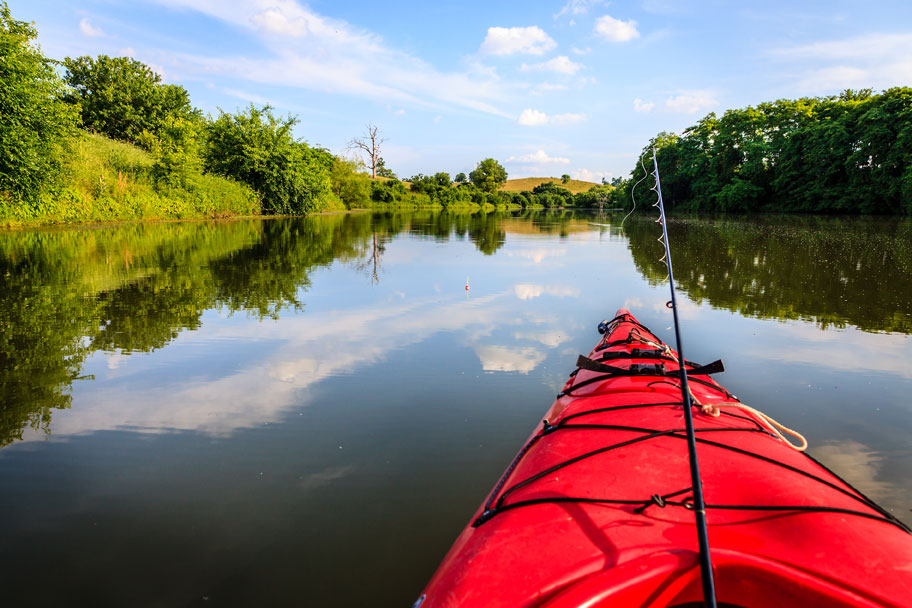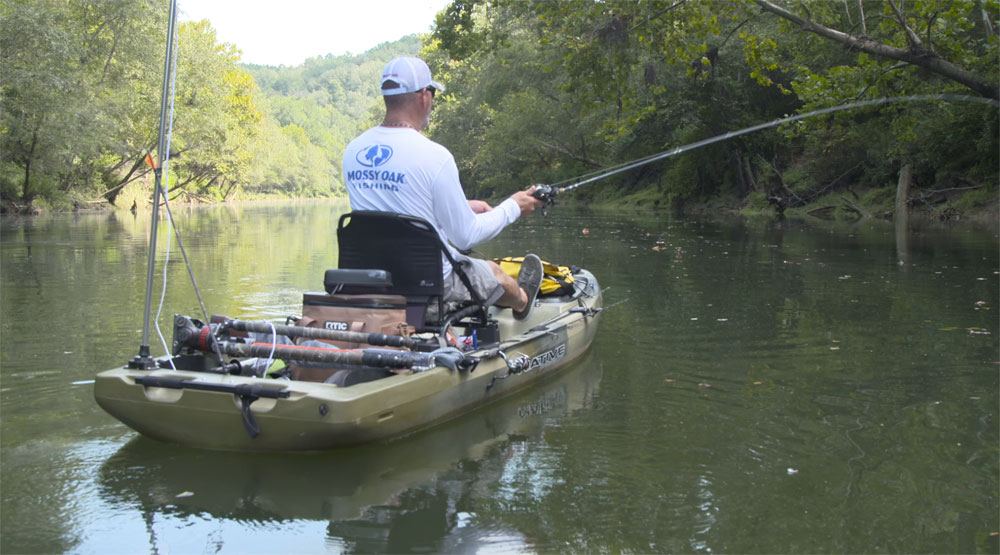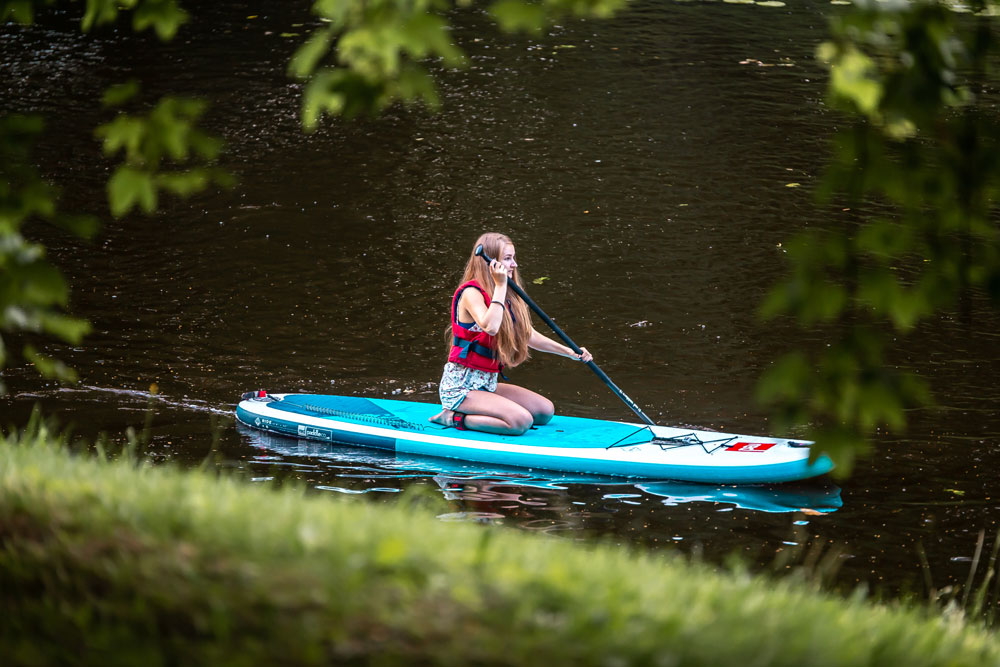Whether you enjoy kayaking or stand-up paddleboarding (SUP) on their own or fishing from your kayak or SUP, you already know the many health benefits of these low-impact activities. They’re a great cardio workout that can help you improve your strength and aerobic fitness. On top of all the fitness gains you get from kayaking and SUP, they’re excellent outdoor activities that allow you to immerse yourself in nature and escape from the stressors of everyday life.
Unfortunately, kayaking and SUP aren’t possible for everyone year-round because of winter or other limiting factors. But that doesn’t mean your paddling fitness has to end with the kayaking and SUP season. Whether you’re waiting for the weather to warm up before you can hit the water again or need some conditioning between trips, there are several ways to stay fit and keep up with your paddle training year-round.

Cardio Training
Cardio training is a fantastic way to keep your heart and body strong during the off-season. Not only will it keep you fit and ready for kayaking and SUP when the season starts back up, but aerobic exercise is known to help prevent heart disease, maintain a healthy body weight and offer many more health benefits.
The amount of cardio needed depends on the type of paddling you do most. If you enjoy kayaking on more active waters, such as rivers or oceans, for instance, you’ll benefit from more conditioning than you would if you are SUP boarding on a still lake. Still, most paddling requires a high level of stamina, especially on long trips or windy days, and aerobic training can help you build the endurance you need.
Some cardio training exercises you might work into your fitness routine include running, biking, swimming, cross-country skiing and other high-intensity workouts. Swimming is considered the best aerobic exercise to add to your off-season training. Not only does it benefit your cardiovascular system, but it can also help ensure you’re prepared for self-rescue if disaster strikes during a kayak bass fishing tournament or SUP adventure across an expansive lake.
If you don’t have access to a gym or are working out from home, you may wish to consider getting a treadmill or fitness bike so you can stay active even in inclement weather. Otherwise, try a high-intensity interval training workout that combines short bursts of intense resistance exercise with periods of lower-intensity cardio exercise.

Strength Training
Once you’ve worked in continuous cardio training, you’ll want to supplement that with targeted strength training. This includes important muscle groups like your core, shoulders and arms.
Strengthening your core—the muscles between your ribcage and hips—is essential to kayaking and SUP because it helps stabilize your body and gives you greater balance and support. If your core muscles are weak, this puts added stress on your arms, shoulders and back, leading to injury .
Kayaking and SUP naturally help build core strength, but it’s vital you maintain muscle tone when you’re off-season. This can help you continue to foster outstanding balance and keep you strong and fit, plus decrease chances of muscle strain or injury when you’re back on the water.
You should focus on strengthening other muscle groups, including your shoulders, specifically around the rotator cuffs, which are engaged while you paddle. Because your shoulder and arm muscles are continuously moving during a stroke sequence in your kayak or on your SUP, building endurance and strength in these muscles is critical to your training. It also helps prepare you for the onset of waves or a strong wind you may have to battle from time to time.
If you don’t have access to the gym, you can easily do strength training exercises with little-to-no equipment at home. Bodyweight exercises, such as pull-ups, -abdominal exercises, pushups and squats are ways to build strength. You might also consider working resistance bands into your workouts to target specific muscle groups or to use dumbbells or medicine balls.
Training each muscle group to withstand resistance and deliver more power with every stroke prepares you for all kinds of water conditions and helps you perform your personal best. Plus, if you like to kayak on your own, building your strength makes kayak transport easier to do by yourself.
Flexibility Conditioning

Another important element of your paddling conditioning and training is flexibility. Yoga and Pilates are two practices that can help you achieve greater flexibility and balance, which are key to these water activities.
Stretching is important not just to kayaking and SUP but in everyday life. It helps you maintain a healthy range of motion in your joints and decreases the risk of injury. Stretching every day and staying committed to this practice enables you to improve your flexibility over time.
Both yoga and Pilates incorporate stretches that improve flexibility in your hamstrings, hip flexors, back, shoulders and arms. These stretches prevent muscles, ligaments and tendons from becoming tight or strained when you’re working them hard on the water or casting your line during a fishing trip. Both yoga and Pilates also focus on strengthening the core and posture, which can help improve how you sit in your kayak or stand on your SUP to optimize your strokes and overall performance.
Yoga has become so popular in the SUP world that many practice yoga poses not just during the off-season but on their board while out on calm waters. If you’ve achieved outstanding balance and flexibility, this is a great way to take your SUP game to the next level.
The Takeaway
Just because your kayak or stand-up paddleboard is in storage doesn’t mean you can’t keep up on your paddling fitness. As you’re waiting for the ice to thaw and temperatures to rise, you can keep your paddling game strong by implementing a fitness program that focuses on cardio, strength training and flexibility to keep your body kayak- and SUP-ready. Keeping up with training helps you maintain a strong core and muscles, endurance and stability when you hit the waters again.






























